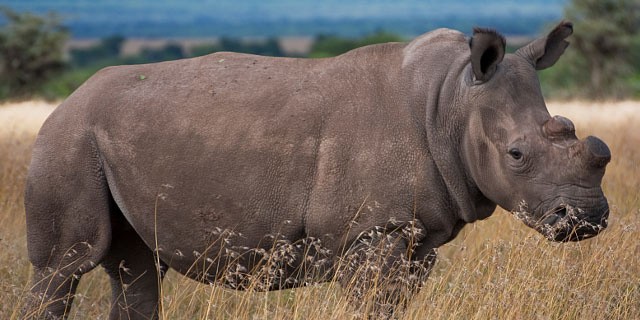
Biologists are trying to figure out ways on how to prevent the extinction of the critically endangered Northern White Rhinoceros. This subspecies of the White Rhinoceros is formerly abundant in several countries in East and Central Africa and south of the Sahara desert. Unlike the other subspecies, the Southern White Rhinoceros, this subspecies prefer grazing in the grasslands and savannas. As of March of 2018, there are only two known Northern White Rhinoceros existing in the world and both are females. Najin, the older of the two, is born in captivity and the other one is her daughter Fatu. Since both females were born in captivity, the Northern White Rhinoceros is declared extinct in the wild.
Decades-worth of poaching has taken its toll on the White Rhinos, especially its two subspecies. Rhinoceros are being killed for their horns which are then sold in the black market to become Chinese traditional medicine. Also, the demand for rhinoceros horns in the black market increases as it becomes a status symbol to display success and wealth. To make matters worse, international criminal organizations are supplying poachers with sophisticated equipment to be able to find and kill rhinos. The most common practice among poachers is to use tranquilizer guns to bring down the poor animal and then remove their horns leaving the animal bleeding to death. Because of the dwindling population of the rhinoceros, collectors are becoming more and more aggressive in trying to get their hands on rhino horns which is unfortunate for the critically endangered (and practically extinct in the wild) animal.
Nevertheless, scientists offered good news in the attempt to save the subspecies at the start of a new decade as they claimed to have successfully created another embryo of the Northern White Rhinoceros. This embryo is the third one to be created in a laboratory and was made possible by harvesting eggs from Fatu, the younger Northern White Rhinoceros, and inseminated it with frozen sperm from dead males of the species. These embryos were then stored in liquid nitrogen and will be transferred to a surrogate mother (preferably a Southern White Rhino) in the following months. In a statement by the Kenya Wildlife Service, wildlife minister Najib Balala expresses excitement on the possibilities of success from this project. Balala says it is amazing to see that the extinction of the subspecies can be reversed with the help of science.
The project's ultimate goal is to be able to create a herd of at least five animals that will be returned to their natural habitats in Africa. But, of course, it will not be easy and may take decades to be accomplished. According to Thomas Hildebrandt of the Leibniz Institute for Zoo and Wildlife Research in Germany, the team will make every effort to achieve the same results with Najin, the older Northern White Rhinoceros.
Researchers are sure that the procedure is safe for the rhinos and can be performed regularly before the females become too old to produce healthy egg cells. The next step after harvesting egg cells is to find a surrogate mother among Southern White Rhinos housed at the Ol Pejeta Conservancy in Kenya.
© 2025 ScienceTimes.com All rights reserved. Do not reproduce without permission. The window to the world of Science Times.











